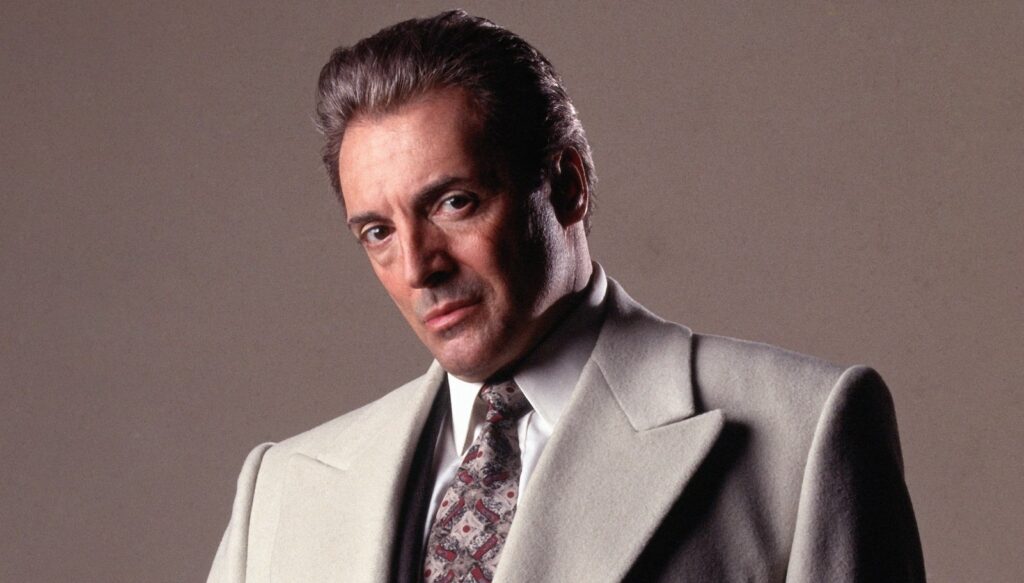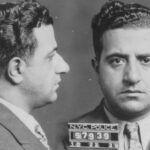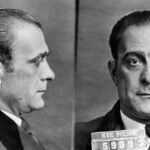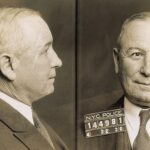John Gotti, also known as the “Teflon Don”, was a figure who captivated the American public and media alike. His life was filled with controversy, crime, and charisma, making him a subject of endless fascination. The 1996 film “Gotti”, starring Armand Assante, captures the life and times of this notorious mobster in a way that few films have managed to do. It offers a compelling look into the life of a man who rose through the ranks of the Gambino crime family to become its undisputed leader.
The Brilliance of Armand Assante
Armand Assante’s performance as John Gotti in the 1996 film is a masterclass in character study. The actor didn’t merely mimic Gotti; he inhabited the role, giving audiences a glimpse into the psyche of one of America’s most infamous mobsters. Assante’s commitment to the role went beyond the script; he conducted extensive research, including studying available footage and documents, to understand the man he was portraying. This dedication to his craft is evident in every frame he occupies.
Assante’s Gotti is a complex individual, a man of contradictions. He’s a family man and a ruthless criminal, a charismatic leader and a cold-blooded killer. These complexities could easily have been lost in a lesser actor’s hands, but Assante manages to convey them all, often in a single glance or a subtle change in tone. His performance is a study in controlled intensity, never veering into caricature or melodrama. It’s this nuanced approach that makes his portrayal not only compelling but also educational, offering viewers a deeper understanding of the man behind the headlines.
Assante’s performance serves as a linchpin for the entire film. His chemistry with the supporting cast, particularly William Forsythe’s Sammy “The Bull” Gravano, adds another layer of depth to the narrative. Their interactions offer a window into the complex, often fraught relationships that exist within criminal organizations, making the film as much a study of human psychology as it is a crime drama.
The Intricacies of Mob Life
The 1996 film “Gotti” serves as a primer on the inner workings of the Gambino crime family, but it also functions as a broader commentary on the ecosystem of organized crime. The film doesn’t shy away from the brutal realities of mob life, including the violence and betrayal that come with the territory. However, it also takes care to present these elements within the context of a rigidly structured, almost militaristic organization, where every action has consequences and every member has a role to play.
The Gambino family, as depicted in the film, is not just a group of criminals; it’s a complex, hierarchical entity with its own set of rules and traditions. The film takes the time to showcase these aspects, from the “making” ceremony that inducts new members into the family to the sit-downs where disputes are settled and strategies are planned. These rituals serve a dual purpose: they add authenticity to the narrative and offer viewers a glimpse into a world that is often misrepresented in popular media.
The politics of the mob are another area where “Gotti” shines. The film delves into the delicate balance of power that exists within the Gambino family, illustrating how even a minor misstep can lead to a shift in alliances and, in some cases, outright war. The relationship between John Gotti and Sammy “The Bull” Gravano serves as a case study in this regard. Their friendship, built on mutual respect and shared ambitions, eventually gives way to suspicion and betrayal, mirroring the larger dynamics at play within the organization.
The film also addresses the role of law enforcement and the media in shaping the public’s perception of organized crime. Through its portrayal of the various investigations and trials that targeted Gotti and his associates, the film raises questions about the ethics and effectiveness of the methods used to combat organized crime. It presents a world where the lines between criminal and crusader are often blurred, adding another layer of complexity to an already intricate narrative.
The Director’s Vision – Robert Harmon
Robert Harmon’s role as the director of “Gotti” cannot be overstated in its importance to the film’s success. Harmon, who had previously been known for his work in the thriller and action genres, took a calculated risk by venturing into the world of organized crime cinema. This risk paid off handsomely, as his unique vision and approach breathed life into a genre that had often been reduced to a series of clichés and stereotypes.
Harmon’s meticulous research into the life of John Gotti and the Gambino crime family is evident in every frame of the film. He consulted with experts in the field of organized crime, pored over court documents, and even sought the counsel of retired law enforcement officers who had been involved in the investigations into the Gambino family. This commitment to factual accuracy lent the film an air of authenticity that resonated with audiences and critics alike.
But Harmon’s genius lies not just in his attention to detail; it’s also evident in his storytelling choices. He opted for a nonlinear narrative structure, employing flashbacks and shifts in perspective to offer a more rounded view of his complex subject. This choice elevated the film from a straightforward biopic to a nuanced character study, one that delved into the motivations and contradictions that defined John Gotti and the world he inhabited.
Harmon’s use of visual motifs and symbolism adds another layer of complexity to the film. The recurring use of religious imagery, for instance, serves as a commentary on the moral ambiguity that pervades the world of organized crime, while the careful framing and composition of key scenes underscore the emotional and psychological stakes involved.
The Supporting Cast
While Armand Assante’s portrayal of John Gotti is undoubtedly the centerpiece of the film, the supporting cast also turns in performances that are both compelling and nuanced. William Forsythe’s Sammy “The Bull” Gravano is a standout, offering a textured portrayal of a man whose loyalty is tested at every turn. Forsythe’s Gravano is not just a sidekick or enforcer; he’s a fully realized character with his own set of ambitions, fears, and moral quandaries.
Anthony Quinn’s Neil Dellacroce, the underboss of the Gambino family, is another highlight. Quinn brings gravitas and complexity to a role that could easily have been a one-dimensional stereotype. His Dellacroce serves as a mentor figure to Gotti, but he’s also a man with his own set of ethical codes and loyalties, which adds an additional layer of tension and complexity to the film’s intricate web of relationships.
The chemistry between the lead and supporting actors is palpable, creating a sense of camaraderie and tension that is crucial to the film’s impact. Their interactions serve as a microcosm of the larger dynamics at play within the Gambino family, offering viewers a window into a world defined by both fierce loyalty and the ever-present threat of betrayal.
The Cultural Impact
The influence of “Gotti” extends far beyond the confines of the silver screen. Since its release, the film has been the subject of scholarly articles, think pieces, and academic courses, cementing its status as a seminal work in the genre of organized crime cinema. Its nuanced portrayal of John Gotti and the Gambino crime family has made it a subject of study for criminologists, sociologists, and historians, who have used it as a lens through which to examine the broader issues surrounding organized crime, law enforcement, and the American justice system.
The film’s impact is also evident in its enduring popularity among audiences. It has spawned fan websites, online forums, and social media groups, where enthusiasts dissect its themes, characters, and narrative structure in minute detail. This level of engagement is a testament to the film’s complexity and depth, qualities that have enabled it to transcend its genre and become a cultural touchstone.
“Gotti” has had a measurable impact on popular perceptions of organized crime. Prior to its release, the public’s understanding of the mafia was largely shaped by sensationalist media coverage and the glamorized portrayals common in earlier films. “Gotti” challenged these preconceptions by offering a more nuanced, fact-based depiction, thereby contributing to a more informed and nuanced public discourse on the subject.
The Music and Cinematography
The auditory and visual elements of “Gotti” are far from mere embellishments; they are integral components that contribute to the film’s overall impact. Mark Isham, the composer behind the film’s score, is a seasoned musician with a diverse portfolio that spans multiple genres. His compositions for “Gotti” are a blend of classical orchestration and modern sensibilities, creating a soundscape that is both timeless and contemporary. The score serves as a narrative tool in its own right, accentuating key moments and underscoring the emotional undertones of specific scenes. Isham’s music is not just an accompaniment but a character in the film, subtly influencing the audience’s perception and interpretation of the unfolding drama.
Alar Kivilo, the director of photography, brings a similar level of expertise and intentionality to the film’s visual elements. Known for his work in films that require a nuanced understanding of mood and atmosphere, Kivilo employs a range of techniques to enhance the film’s storytelling. His use of lighting, in particular, is noteworthy. Whether employing the harsh fluorescents of a prison interrogation room or the soft, ambient light of a family gathering, Kivilo’s choices serve to amplify the emotional resonance of each scene. His camera work is equally impressive, utilizing a variety of angles and movements to create a visual language that complements the film’s narrative structure.
The choice of filming locations also contributes to the film’s authenticity. Rather than relying solely on soundstages, the production team opted for real-world locales that mirrored the environments in which the real-life events took place. This decision not only adds a layer of realism but also serves to ground the film in a specific time and place, making it more relatable and engaging for the audience.
The Legacy of “Gotti”
The 1996 film “Gotti” is not merely a biopic or a crime drama; it is a seminal work that has influenced a generation of filmmakers, writers, and scholars. Its impact can be seen in the numerous films and television shows that have followed in its wake, many of which have sought to emulate its balanced approach to storytelling and character development. However, what sets “Gotti” apart from its successors is its refusal to simplify or sensationalize its subject matter. It presents its characters as flawed, complex individuals, not caricatures or archetypes, thereby forcing the audience to engage with them on a deeper, more intellectual level.
The film’s influence is also evident in academic circles, where it is often cited in discussions about the ethics and methodology of biographical storytelling. Its nuanced portrayal of John Gotti and the Gambino crime family has made it a valuable resource for those studying the sociology and psychology of organized crime, as well as the broader cultural and historical factors that contribute to its existence and persistence.
“Gotti” has had a lasting impact on public discourse surrounding organized crime and law enforcement. It has sparked debates and discussions that extend beyond the realm of entertainment, touching on issues of morality, justice, and the complexities of the American legal system. Its legacy is not confined to its runtime or its box office earnings; it is woven into the fabric of contemporary American culture, serving as a touchstone for anyone seeking to understand the intricacies of life on both sides of the law.
Final Thoughts
In the realm of films about organized crime, “Gotti” holds a special place. It succeeds not only as a biographical account of a notorious figure but also as a detailed examination of the world that produced him. With its strong performances, meticulous attention to detail, and compelling storytelling, “Gotti” sets a high standard for what a mafia movie can and should be. It serves as both an entertaining watch and a thoughtful commentary on the complexities of life within organized crime.







